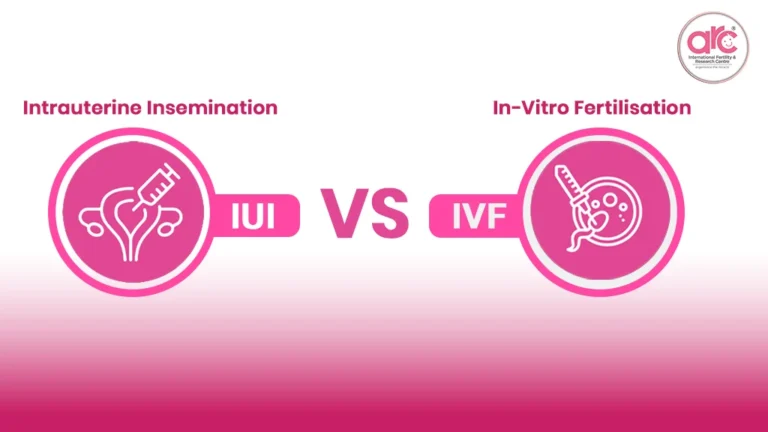Overview
In every woman’s body, two fine tubes hold the promise of life.
They connect the ovaries to the uterus.
They carry the egg, the sperm, and sometimes, the hope of a family.
When these tubes are blocked, conception becomes difficult — sometimes impossible.
Yet many women don’t even know they are blocked.
Let’s understand how to find out, early and clearly.
What are Fallopian Tubes and why they matter
The fallopian tubes are slender passageways — only a few millimetres wide.
After ovulation, the egg moves through them toward the uterus.
If sperm meets egg inside the tube, fertilisation occurs.
But when a tube is blocked, the egg cannot travel.
Sperm cannot reach it.
Fertilisation stops before it begins.
This is one of the common causes of infertility in women.
The good news: it can be checked, diagnosed, and treated.
Common causes of blockage
- Pelvic infections – especially untreated sexually transmitted infections.
- Previous surgeries – operations around the uterus or appendix can leave scar tissue.
- Endometriosis – tissue growth outside the uterus can press or close the tubes.
- Tuberculosis of the reproductive tract – still seen in parts of India.
- Past miscarriages or abortions – sometimes cause inflammation if infection follows.
Each of these conditions can quietly damage the tubes over time.
That’s why early screening matters.
Early signs to watch for
Often, there are no clear symptoms.
That’s what makes the problem tricky.
But a few signs can alert you:
- Pain in the lower abdomen, especially during menstruation.
- Pain during intercourse.
- Unexplained difficulty in conceiving after a year of trying.
- Irregular cycles or discharge that seems unusual.
White discharge alone is not always a concern, but if it changes colour, smell, or quantity, it may suggest infection.
You can read more about this in our post: White discharge during early pregnancy.
Simple and reliable ways to check for blockage
You don’t need major surgery to find out.
Modern tests are safe, quick, and clear.
1. HSG (Hysterosalpingography)
This is the most common test.
A dye is gently passed into the uterus through the cervix.
X-rays then show if the dye travels through both fallopian tubes.
If it stops midway, that tube is likely blocked.
The test takes about 15–20 minutes.
It can feel slightly uncomfortable but gives valuable information immediately.
2. Sonosalpingography (SSG)
A non-invasive, ultrasound-based method.
Saline or contrast fluid is inserted into the uterus, and ultrasound is used to track its flow.
No radiation, less pain, and quick recovery.
3. Laparoscopy with Dye Test
If both HSG and SSG suggest blockage, doctors may recommend laparoscopy.
Through a tiny cut near the navel, a thin camera examines the uterus, ovaries, and tubes directly.
Dye is added again to confirm blockage.
This method not only diagnoses but can also treat — doctors can remove adhesions or scar tissue during the same procedure.
What if one tube is blocked?
If only one fallopian tube is blocked and the other is open, pregnancy is still possible.
The open tube can release and receive an egg every alternate month.
Your doctor may guide you on timing and ovulation monitoring.
If both are blocked, natural conception becomes difficult, but not impossible.
IVF — In Vitro Fertilization — bypasses the tubes altogether.
Egg and sperm meet in the lab, and the embryo is placed directly into the uterus.
That is where technology and expertise meet hope.
Choosing the right centre
Diagnosis and treatment of blocked tubes need precision — not guesswork.
At a trusted fertility hospital in Chennai, doctors focus on identifying the exact cause.
Some women may need simple medication, others may need surgical correction or IVF.
The best fertility hospital in Chennai will never rush you.
It will explain your options step by step — what’s possible, what’s affordable, what’s right for your body.
At ARC Fertility Hospital in Chennai, this clarity is part of every consultation.
No false promises. No unnecessary procedures. Only informed care.
Factors that affect success
Age and overall health influence outcomes strongly.
You can read our detailed piece — How does age and health affect IVF success rate — for clear guidance.
In short, younger women tend to have better egg quality.
But with disciplined treatment, even those above 35 can conceive successfully.
What matters is early action and steady medical follow-up.
Can blocked tubes be prevented?
In many cases, yes.
Here’s how:
- Treat pelvic infections promptly.
- Avoid unsafe abortions or unqualified procedures.
- Maintain hygiene during menstruation.
- Get regular gynaecological checkups.
- Don’t ignore abnormal discharge or pelvic pain.
Small steps today save major interventions later.
Emotional truth behind the diagnosis
Hearing “blocked tubes” feels heavy.
It shakes confidence. It brings fear.
But remember — it’s not the end of your fertility journey.
It’s a starting point for the right action.
Medical science today offers multiple routes to parenthood.
From tube repair to IVF, from counselling to care — the possibilities are real.
At ARC Fertility Hospital in Chennai, thousands of couples have overcome this barrier.
Some conceived naturally after minor correction.
Some through assisted techniques.
All through faith and informed choice.
Final thought
The fallopian tubes may be narrow, but their role is immense.
When blocked, they whisper — not shout.
Listen early. Act early.
Because fertility issues respond best to awareness, not fear.
And the right hospital gives not only treatment, but peace of mind.
If you suspect a blockage, don’t wait for years of doubt.
Walk into a trusted clinic. Ask the simple question: “Are my tubes open?”
That one question can change your story.
Truth first. Treatment next. Hope always.




